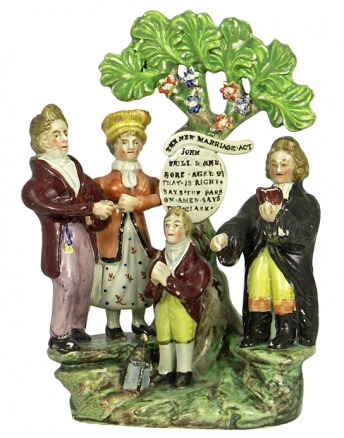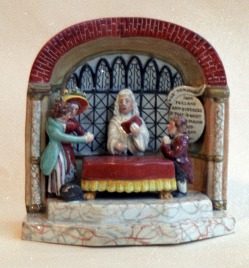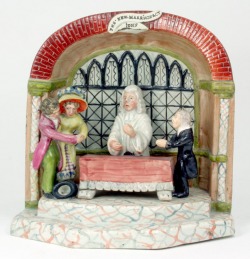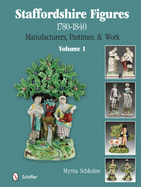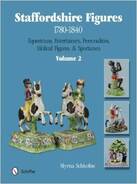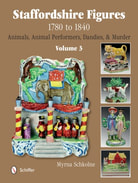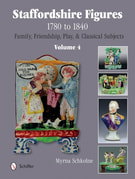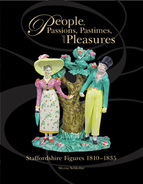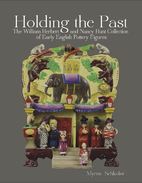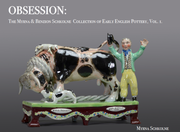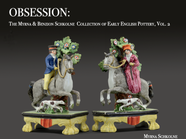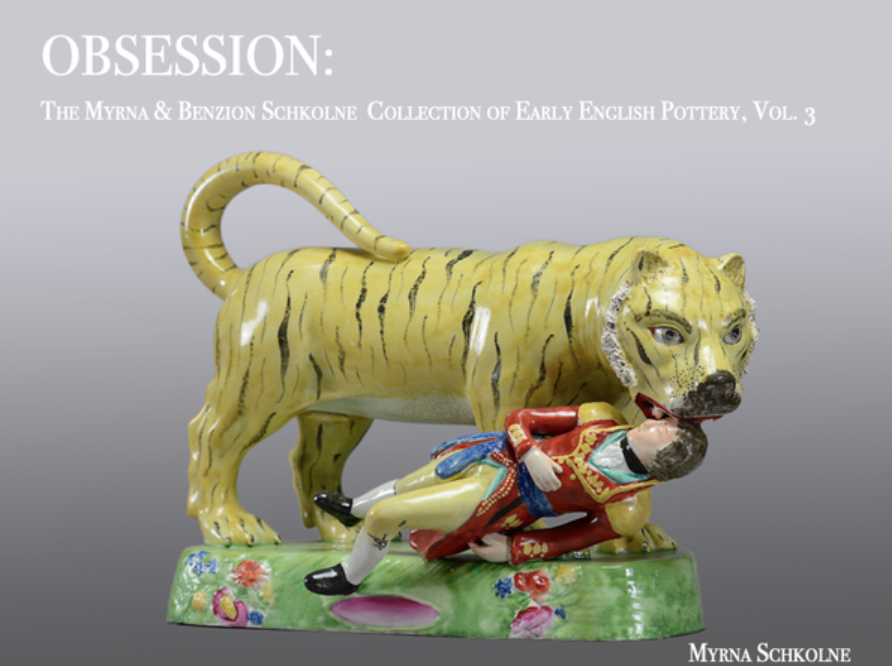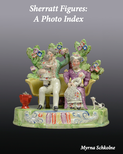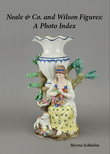The case that brought England’s problematic marriage law to parliament’s attention concerned the young Earl of Belfast. On the threshold of the earl’s marriage, his uncle stepped forward, disputing the earl’s legitimacy and declaring himself heir presumptive to what the earl had thought was his inheritance. The basis for this challenge was that the earl’s parents, the Marquis and Marchioness of Donegal, had married without the parental consent that the law mandated. The earl’s noble marriage was postponed while the marquis and marchioness tried every legal maneuver to establish the validity of their marriage and their children’s legitimacy. When all failed, parliament legislated the “New Marriage Act” as a remedy. Society expected marriage to last for life, so the Marriage Act of 1823 made it no longer possible to annul a marriage because of a petty violation of the marriage law.
The plaque on the figure reads THE NEW MARRIAGE ACT. JOHN FRILL AND ANN BOKE AGED 21 THAT IS RIGHT SAYS THE PARSON AMEN SAYS THE CLERK. In other words, whatever the true age of either John or Ann, who claimed to be 21 years old and thus of marrying age, they were married. Amen. No going back. How times have changed!
To get back to our figure: I particularly like this example because the enamels are pretty, the modeling is vigorous (just look at the expressions on those faces) and the condition is great. Even her finger sticking out in expectation of a ring has not snapped off. The only restoration here is to the tip of the ribbon titling the plaque. You can understand why it broke off, sticking out as it does.
New Marriage Act groups also occur in arbor form.
